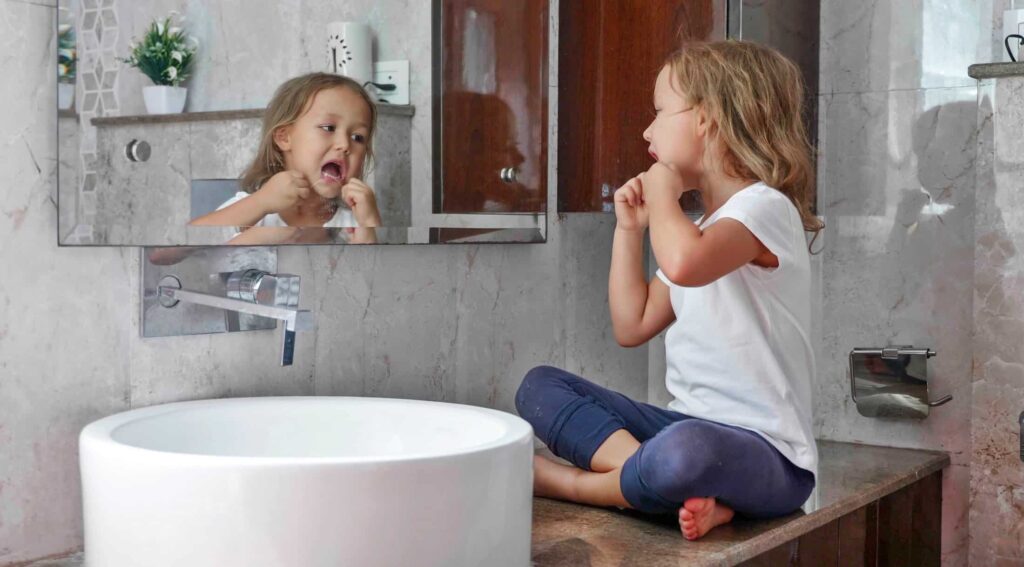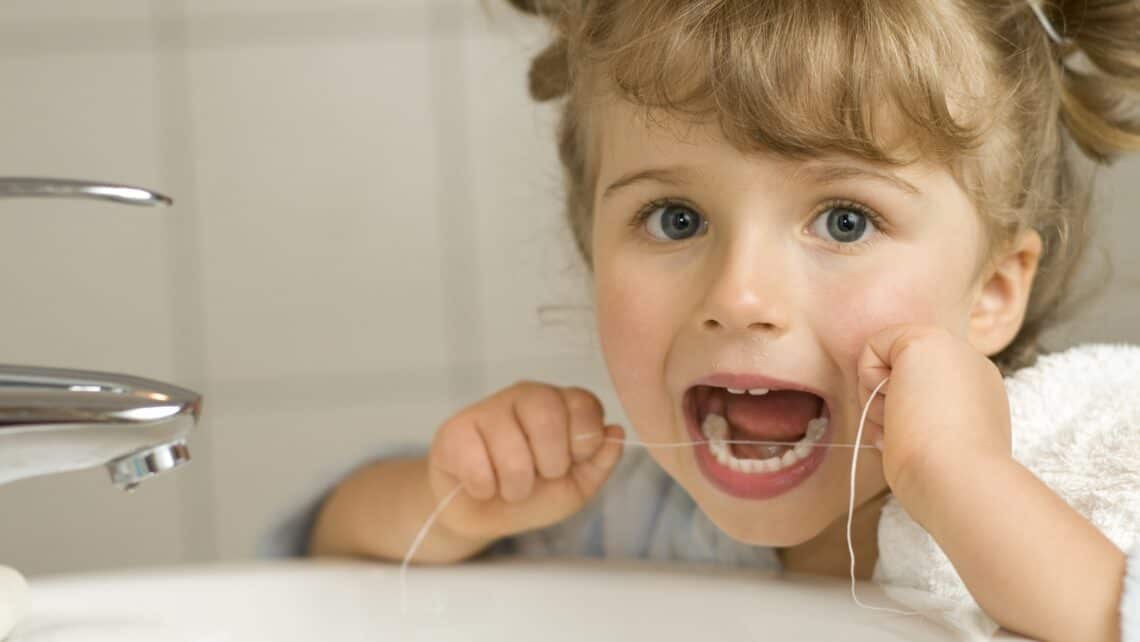Flossing is an important part of your dental care routine because it removes food particles from between your teeth. When these particles are not removed, they cause plaque and bacteria build up, thereby causing tooth decay and gum disease.
When should children start flossing?
Most parents know that their children need to start cleaning their teeth as soon as they get them. But when do we start flossing children’s teeth?
Generally, it is believed that we need to start flossing as soon as the child’s teeth start to fit closely together. This usually happens between the ages of two and six. Establishing good flossing habits early in life is important for many reasons. When children learn to floss early, they are more likely to continue this behaviour throughout their lives. In addition, establishing good flossing habits at an early age ensures that teeth and gums remain as healthy as possible.
- It is very important to note that flossing is part of a good oral hygiene routine and can help prevent cavities and gum disease
- Flossing does more than just dislodge visible foods from between your child’s teeth. It can also help remove plaque, which can eventually turn into tartar and lead to more serious dental issues
- Note that your child might not get the hang of flossing until they are 8 to 10 years old
Hence, it is important for you to teach your children how to floss properly which is explained below.
How to floss children’s teeth?
When your baby has only one tooth, keeping it clean is easy. But as more teeth begin to appear, you will need to set up an oral care routine.
Regular flossing can ensure that debris doesn’t remain lodged between their teeth. Additionally, flossing helps to manage bad breath and can polish the surface of your child’s teeth.
Flossing needs to be done once per day and at least 2 minutes per session. Regardless of the flossing tool you pick, below are the steps that will help you to manage flossing.

What steps should I follow while flossing?
There are 2 types of flossing methods when using traditional floss:
Spool method (also called the finger-wrap method)
- Cut off a piece of floss about 18 to 20 inches long
- Lightly wrap each side of the piece of floss several times around each middle finger
- Carefully move the floss in between the teeth with your index fingers and thumbs in an up and down motion
- Bring the floss up and down, making sure to go below the gum line. Bend it to form a C on the side of each tooth
Loop method (also called the circle method)
- Cut off a piece of floss that is about 18 inches long
- Tie it securely in a circle
- Next, place all the fingers, except the thumb, within the loop
- Then use your index fingers to guide the floss through the lower teeth. Use your thumbs to guide the floss through the upper teeth
- Go below the gum line, bending it to form a C on the side of each tooth
What type of floss should I use?
Most of us have used something other than floss to pick debris out of our teeth. The common objects used are fingernails, paperclips, pencils, and pins which often can do more harm than good and lead to oral injuries. You should use only floss to clean your child’s teeth.
Some of the types of floss are:
- Waxed and unwaxed floss
- Flavoured and unflavoured floss
- Floss Picks
All the types of floss listed above are equally effective if you are diligent about working thoroughly across each tooth to remove plaque.
You may need a few tries to select the best type for your child and one that makes it easy for you to manage. Apart from traditional flossing rolls, water flossers are can also be an alternative for flossing, especially when your child has braces.
If you are still not sure about which type to use, you can ask your child’s dentist to determine which option might work best for your kid.

Other tips
- Sometimes letting your little ones floss your teeth can help take away any hesitancy
- Remember not to be too forceful when you floss your child’s teeth. Flossing should not cause bleeding and be painful
- Consider rewarding your child with something (other than food) for a good flossing experience
- While flossing after meals or right before bed is something most people assume is required, the time of day does not necessarily matter if it is done daily
Summary
Dental health is equally as important as the rest of your child’s physical health. And just like you need to show them how to manage other daily activities – getting dressed, bathing, even eating – you need to also take the time to properly train your children to keep their teeth clean.
While flossing will require more hands-on effort on the part of parents, especially early on, the goal of a healthy mouth that’s free of cavities should make the process worth it.
Make flossing part of a daily routine to help your children care for themselves.
Want to book an appointment for your kids?
Book an appointment by calling our friendly team on 3390 6100 or by emailing us. Or click here to book it online.








0 Responses
I found this article very interesting, thanks for sharing